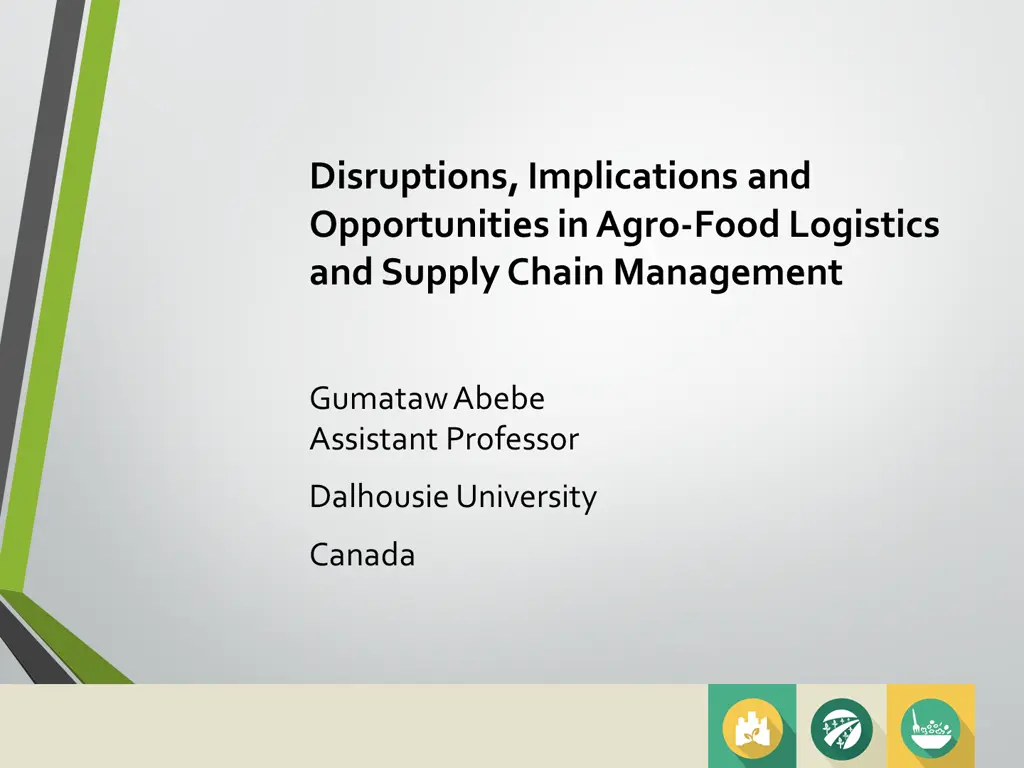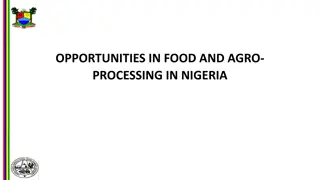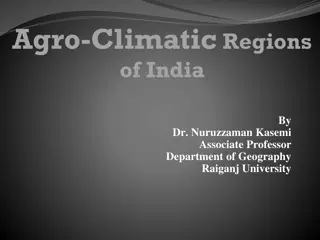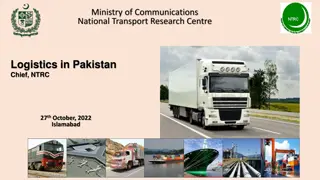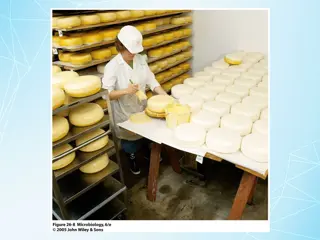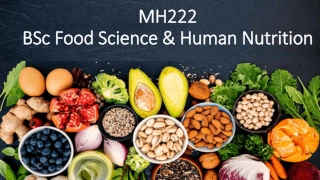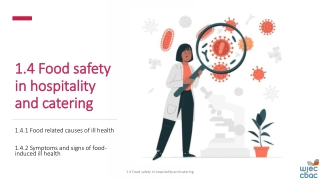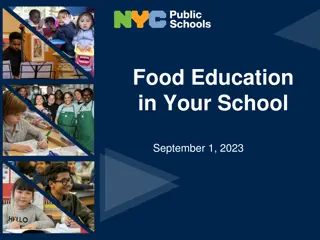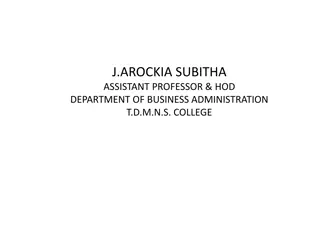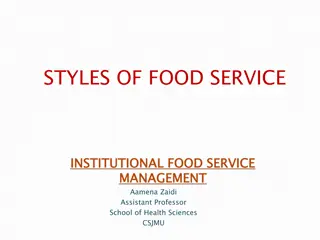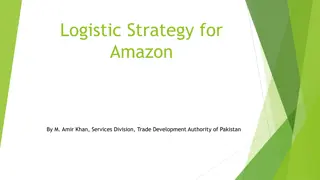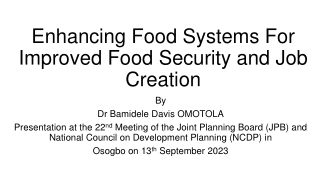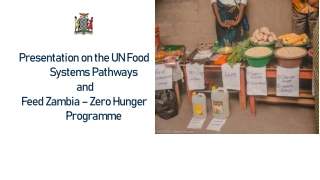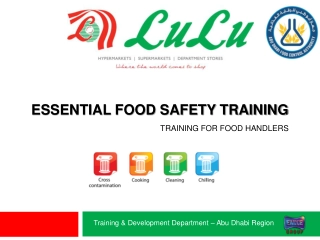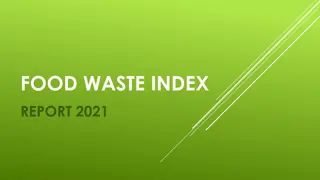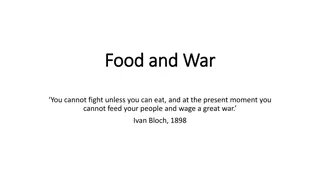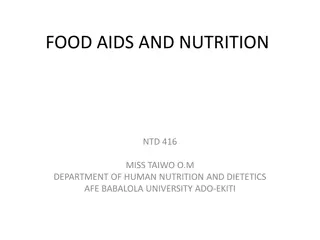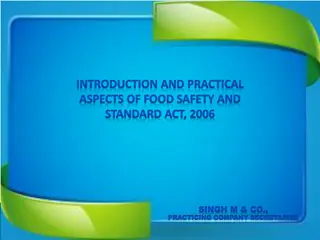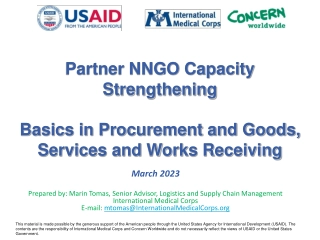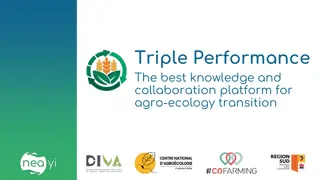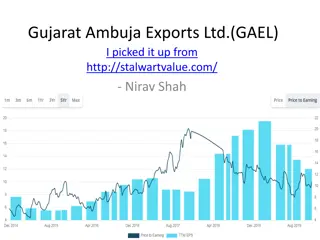Trends in Agro-Food Logistics Management
Explore emerging trends in global agro-food logistics and supply chains, including disruptions, implications, and opportunities. Learn about challenges like food losses, regulatory changes, resistance to GMOs, and more. Gain insights into the changing landscape of food systems.
Download Presentation

Please find below an Image/Link to download the presentation.
The content on the website is provided AS IS for your information and personal use only. It may not be sold, licensed, or shared on other websites without obtaining consent from the author. Download presentation by click this link. If you encounter any issues during the download, it is possible that the publisher has removed the file from their server.
E N D
Presentation Transcript
Disruptions, Implications and Opportunities in Agro-Food Logistics and Supply Chain Management Gumataw Abebe Assistant Professor Dalhousie University Canada
Agro- food logistics and supply chains Trends Disruptions Resilience
Recent trends shaping global- agro-food logistics and supply chains Population growth, urbanization and ageing Competition for natural resources Agriculture contributes 80% of deforestation and 70% water withdrawals Climate change Agriculture contributes the largest share of global methane and nitrous oxide emissions
Trends shaping global- agro- food logistics and supply chains Yield increases are slowing Resistance to GMOs risks the contribution of biotechnology Agricultural productivity and innovation Zoonotic diseases and antimicrobial resistance pose a growing threat to human health Transboundary pests and diseases Triple burden of malnutrition remains a global health emergency Nutrition and health
Trends shaping global- agro- food logistics and supply chains Food losses and waste One-third of all food produced is lost or wasted along the agro-food chain Food regulations All aspects of the food supply chain are subjected to regulations Changing food systems Increased coordination and integration of primary production, processing and distribution
Disproportionate buying power and consumer brands Power of retailers. in agro- food logistics and supply chains Economies scale and knowledge of the final market They can keep up to 30,000 different items to satisfy consumer demands In more than 90% of the time, these product choices are available in stock
Disruptions in agro-food logistics and supply chains Disruptions happen frequently in agro-food logistics and supply chains Catastrophes (e.g., hurricane and earthquake) Terrorism Transportation disruption due to storms, snow, hail, rain, winds. Health hazard - epidemic, famine Strikes Workers/political strikes
Dependency on global supply chains means more risks Disruptions in agro- food logistics and supply chains These risks are compounded by globalization and logistical complexity, fewer suppliers
Farm production is inherently biological; little flexibility to adjust production in response to sudden events Disruptions in agro- food logistics and supply chains is unique Most agricultural commodities are highly perishability, further reducing the ability to alter delivery schedules
The complexity behind agro- logistics and food supply chains is quite remarkable Disruptions in agro- food logistics and supply chains is unique Maintain seamless cold chain from source to retail. Meet food safety, traceability and regulatory requirements of the importing country Implement technology for real- time monitoring of temperature, movement, location, humidity etc.
COVID-19 hits the global supply chains in unfamiliar manner A drastic shift in consumer demand away from restaurants and food service. Sudden decrease in the demand for non-essential products Increase retail demand for frozen and packaged foods Disruptions during COVID-19
Disruptions differed by modes of transport Bulk shipments have not seen major disruptions Logistics problems are most pronounced for perishable. Disruptions during COVID-19 The greatest problem was getting raw materials from suppliers and guaranteeing food movement from farm to fork High production and distribution cost due to higher transport cost, labour, and logistics uncertainties Disruptions in processing (e.g. meat)
COVID-19 imposed shocks on all segments of agro-food supply chains Sourcing of raw materials Disruptions during COVID-19 Obtaining raw materials from suppliers was the biggest issues Significant portion of inputs are sourced from other countries Production Production was reduced, suspended Huge losses reported where farmers burning, disposing or dumping perishable products
Processing and packaging Labor shortage was a problem Disruptions during COVID-19 Storage Storage cost increased due to lower turnover of stocks, particularly perishable goods Logistics barriers weaken high- value goods due to their short shelf life
Wholesale distribution Globally, 75% of companies reported supply chain disruptions due to transportation restrictions Disruptions during COVID-19 Retail redistribution to consumers The retail sector heavily relies on salesforce and transportation services. Both of them are poorly affected
Agro-food logistics and supply chains have largely been remarkably resilient to date COVID- 19 impact on agro- food logistics and supply chains Supply chain disruptions caused by the shift from food service to food retail were largely short-run The short-run disruptions resulted cases of food waste: milk thrown away, fresh fruits and vegetables rotting, etc.
Agro-food supply chains have largely been remarkably resilient to date How to develop more resilience in agro- food logistics and supply chains? Strengthening the traditional supply chain resilience capabilities Coordination and information sharing, Developing the ability to manage coordinated solutions between various actors Logistics Investment in reliable transportation and telecommunications systems Diversified sources of supply
Increased use of automation and digitalization. How to develop more resilience in agro-food logistics and supply chains? Resource Sharing Operational Flexibility Multiple Sourcing Localisation/decentralisation of operations Waste Management
Could local food systems feed the world? Sustainability concerns have shaped consumer preference for high-quality local foods. Increasingly, global food movements are promoting this holistic approach to food Local food systems tend to be people- centredand many manage resources in a sustainable way. Emphasis on local supply chains Definitely not, but complementary
Travel restrictions impacted supply chains that depended on purchased items abroad Emphasis on local supply chains The efficiency of global supply chains in the event of pandemics is questionable Local supply chains can pivot to global supply chains Local may not be defined by geographical proximity, the Internet becomes the virtual farmers market
The COVID-19 pandemic is very unprecedented Agro- food logistics and supply chains resilience during COVID-19 The impact was compounded due to globalization COVID-19 does not appear to have weakened the integrity of cross- border agrifood supply chains. Agro-food products continued to flow across the border.
Agro- food logistics and supply chains resilience during COVID-19 Overall, food supply chains have demonstrated robustness and resilience during COVID-19. Food processors and retailers took several steps Policy makers also streamlined certification procedures and relaxed regulations on food trade
Consumers do not have sufficient income to spend on food Shoppers are turning more to online purchasing Implicatio ns As more shoppers buy online, the hypermarket/ supermarket business model may not be efficient Focus on digital technologies, omni- channels platforms, and hybrid business models
Thank you! 24
